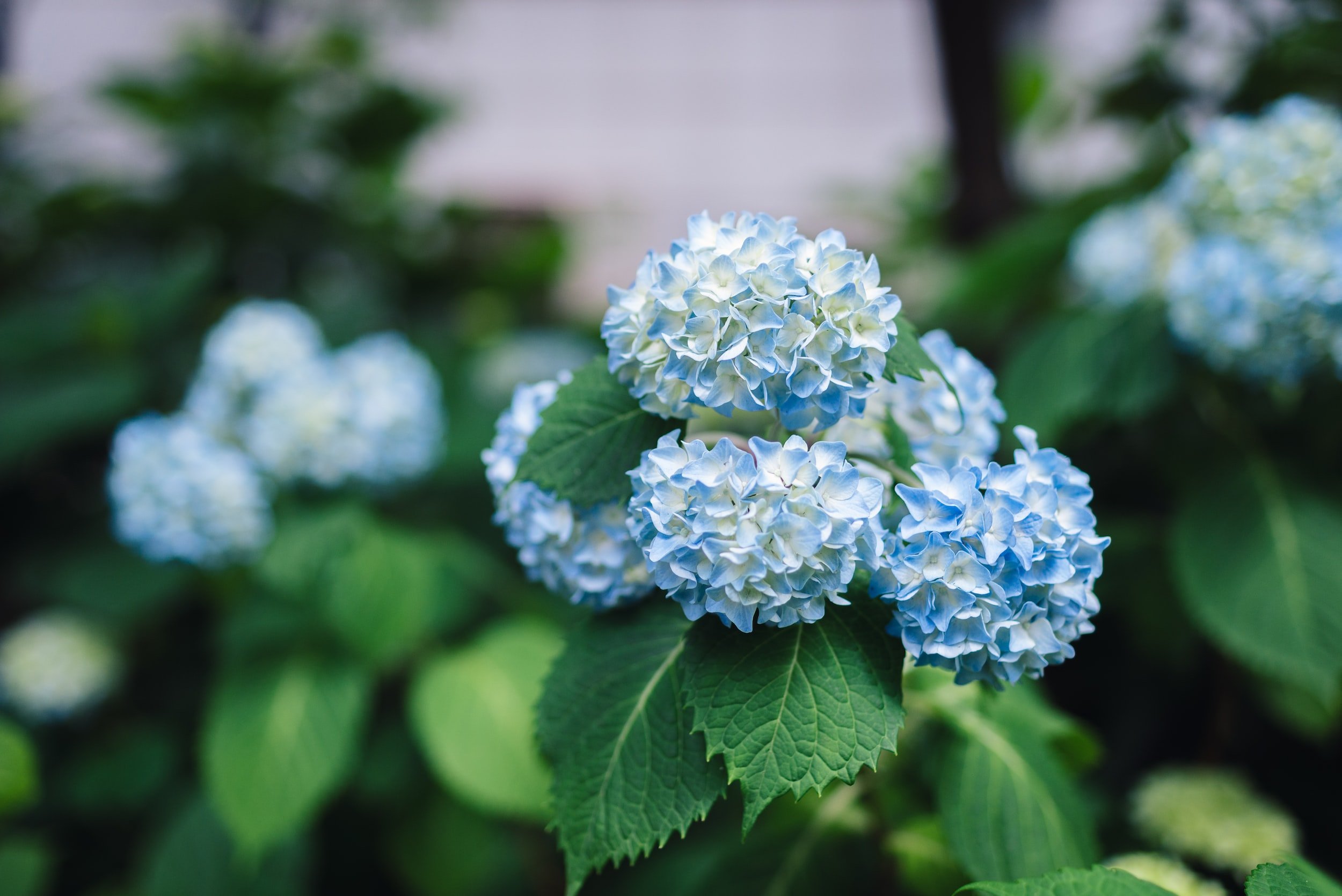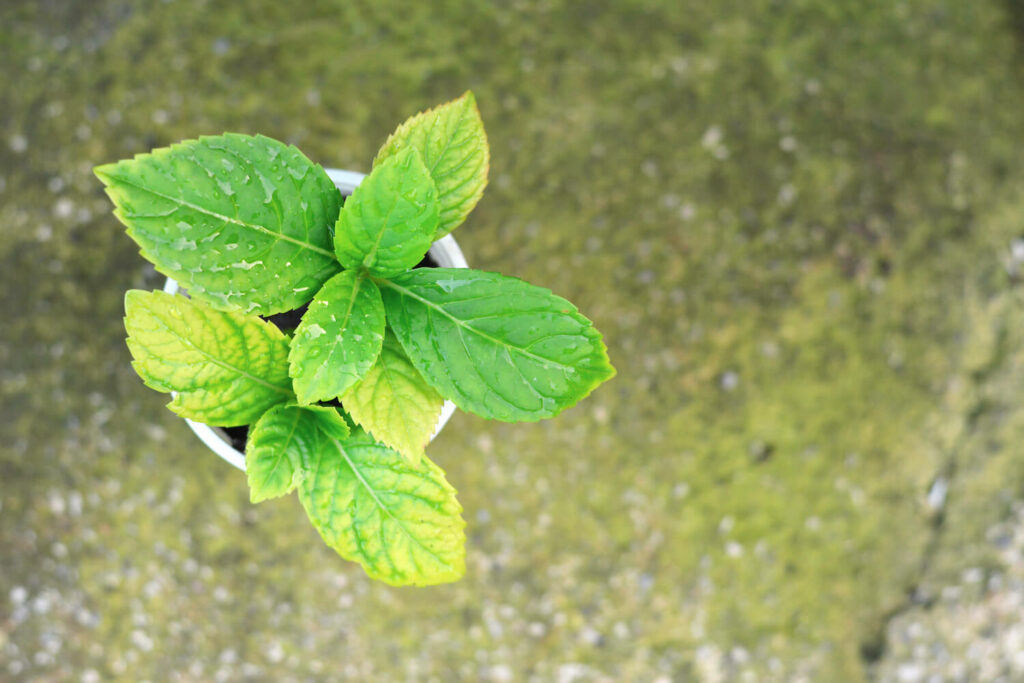The Buzz on Hydrangea Leaves Turning Yellow
Wiki Article
How Hydrangea Leaves Turning Yellow can Save You Time, Stress, and Money.
Table of ContentsThe 9-Second Trick For Hydrangea Leaves Turning YellowThe 7-Minute Rule for Hydrangea Leaves Turning YellowSome Known Details About Hydrangea Leaves Turning Yellow Not known Incorrect Statements About Hydrangea Leaves Turning Yellow The Ultimate Guide To Hydrangea Leaves Turning YellowThe Ultimate Guide To Hydrangea Leaves Turning Yellow
Big leaves frequently look droopy during the afternoon warmth. When they fall short to perk up in the night or still look wilted in the morning, your plant can be overwatered.Eliminate the plant from the soil and trim out any roots that aren't white and swollen (plump). Do not try to remedy the issue by watering excessively.

How Hydrangea Leaves Turning Yellow can Save You Time, Stress, and Money.
Initially shows up on the older fallen leaves, however the fallen leave blood vessels remain eco-friendly. While there is generally enough iron in natural dirt, hydrangeas frequently have a hard time to soak up sufficient of it.The very best way to stop iron deficiency-chlorosis in hydrangeas is to plant them in suitable ericaceous or acidic soil. When planting in a bed, mix in some peat or reduced-peat ericaceous compost and inspect the p, H value annually. This is essential because the compost mixture around the plants will influence the p, H value of the soil in the future and the p, H value might rise once again.

Hydrangea Leaves Turning Yellow for Beginners
September is the finest time of year to do something about those hydrangeas. Their fallen leaves are transforming yellow, the flowers have discolored, and their gangly look is making you insane. Beginning with the existing flowers, currently is the moment to reduce them for dried out plans. If you cut the large blossoms earlier in the season, they will certainly shrivel.Mophead, Lacecap and Oakleaf hydrangeas bloom on old timber. Do not prune Mophead, Lacecaps and Oakleaf hydrangeas to the ground, as you will certainly eliminate the stems that are ready to flower next springtime.
In this way you won't be eliminating too many of following year's blossom buds. Trim out as much dead timber as you can find. You can reduce deadwood to the ground. If the shrub is obtaining larger than you like, you can take out a third of the online wood while you're check here in there.
The smart Trick of Hydrangea Leaves Turning Yellow That Nobody is Talking About
We're right in the middle of our late-blooming hydrangea season right here, so I believed I would certainly share a pointer for this certain kind of hydrangea that I found actually interesting. A great deal of individuals have a comparable problem with their panicle hydrangeas where they begin to see the fallen leaves transforming yellow and going down off at various parts of the season and it can be quite remarkable and quite worrying since it can take place really rapidly on a hedge that seems like it's otherwise truly healthy and balanced.I have actually shared it on Instagram before, but have a peek at this site I realized I've never ever informed you concerning this in a real, full blog site message, so today I'm taking care of that. When I say that this relates to panicle hydrangeas, that means the kind of hydrangeas that usually flower later in summer, usually around August.
Where we reside in zone 6, they're quite very easy to have success with and they're really popular in our area, which see this website is fantastic because that implies that there are hydrangeas almost anywhere currently of year. When you see your hydrangea leaves starting to turn yellow, you might believe that your plant is passing away or being maltreated in some way, however actually, the opposite holds true.
The Definitive Guide to Hydrangea Leaves Turning Yellow

Courtenay is the author of the publication The Cleansing Ninja and has been included in many magazines consisting of Country Sampler Farmhouse Design, Better Homes and Gardens, Parents Publication, Real Simple, and Our Houses.
Water logged soil deprives the roots of oxygen, resulting in root rot and yellow fallen leaves. On the other hand, underwatering or dehydration creates the plant to shrivel and its foliage to yellow. Keeping a consistent watering schedule and making certain appropriate drainage with drainage openings or layers can assist avoid these concerns.
The Main Principles Of Hydrangea Leaves Turning Yellow
With correct care and upkeep, hydrangeas can flourish and preserve their dazzling, vivid fallen leaves. Hydrangea leaves turning yellow is a common problem that can be connected to different aspects (Hydrangea Leaves Turning Yellow).The kind of yellowing seen (e. g. the placement of the influenced leaves on the plant, and/or the pattern and position of the yellowing on the leaf itself) will certainly frequently differ according to the cause. The chlorosis is often gone along with by other symptoms giving more clues regarding the reason, e.Instances include sap-sucking bugs such as aphids, red spider mites and whiteflies, and root feeders such as vine weevil and cabbage root fly. When once more it is commonly possible to locate the culprit on the leaves or amongst the origins.
Report this wiki page